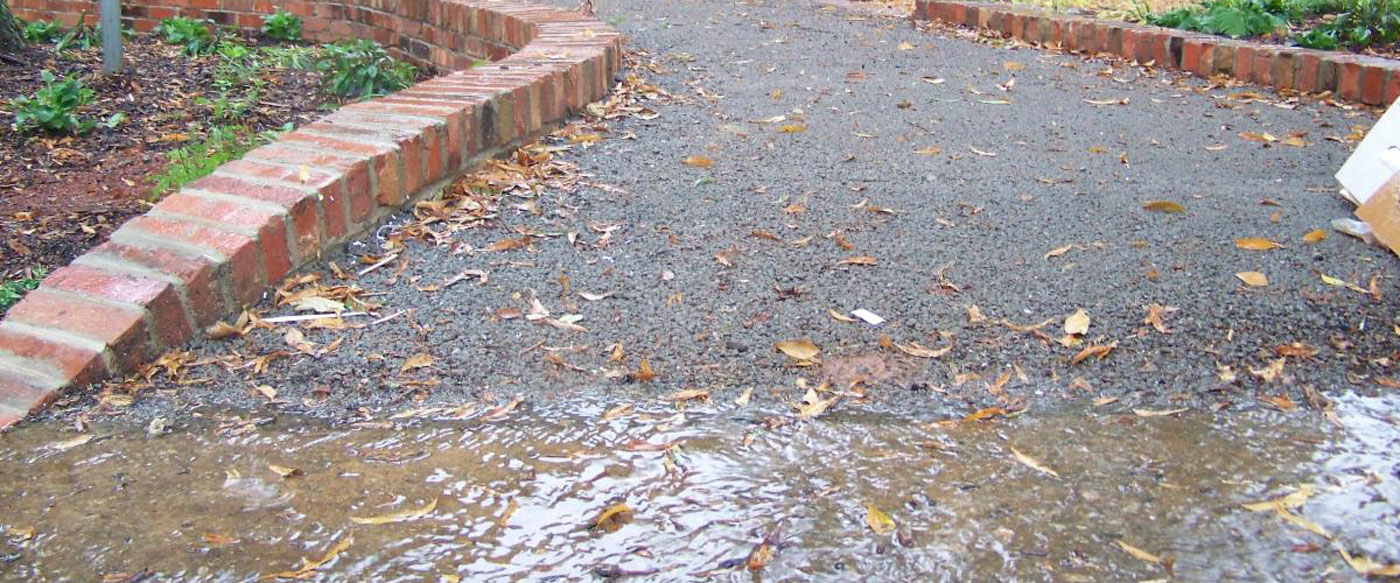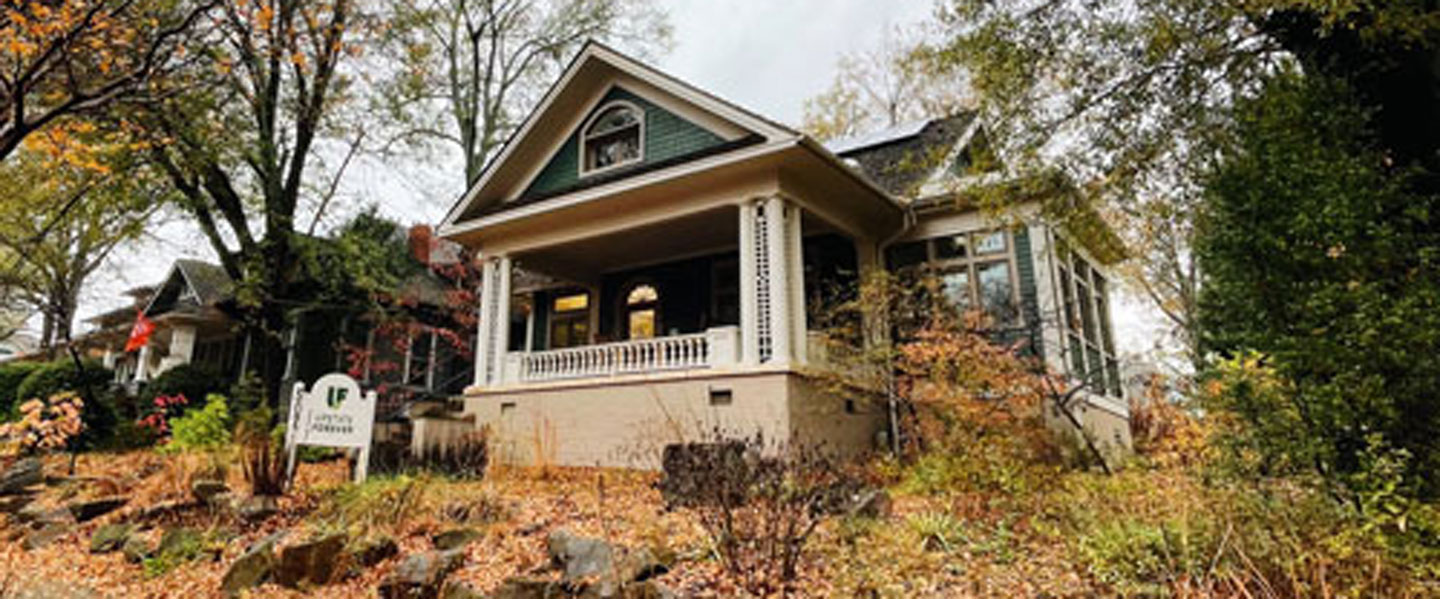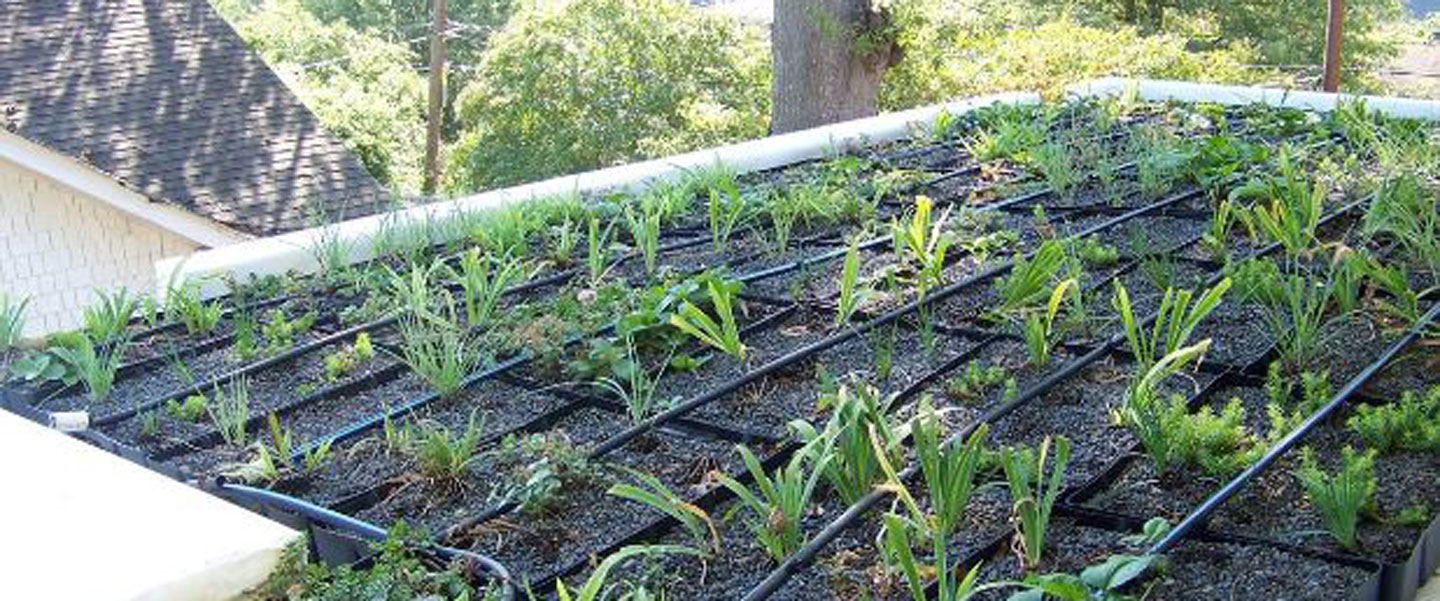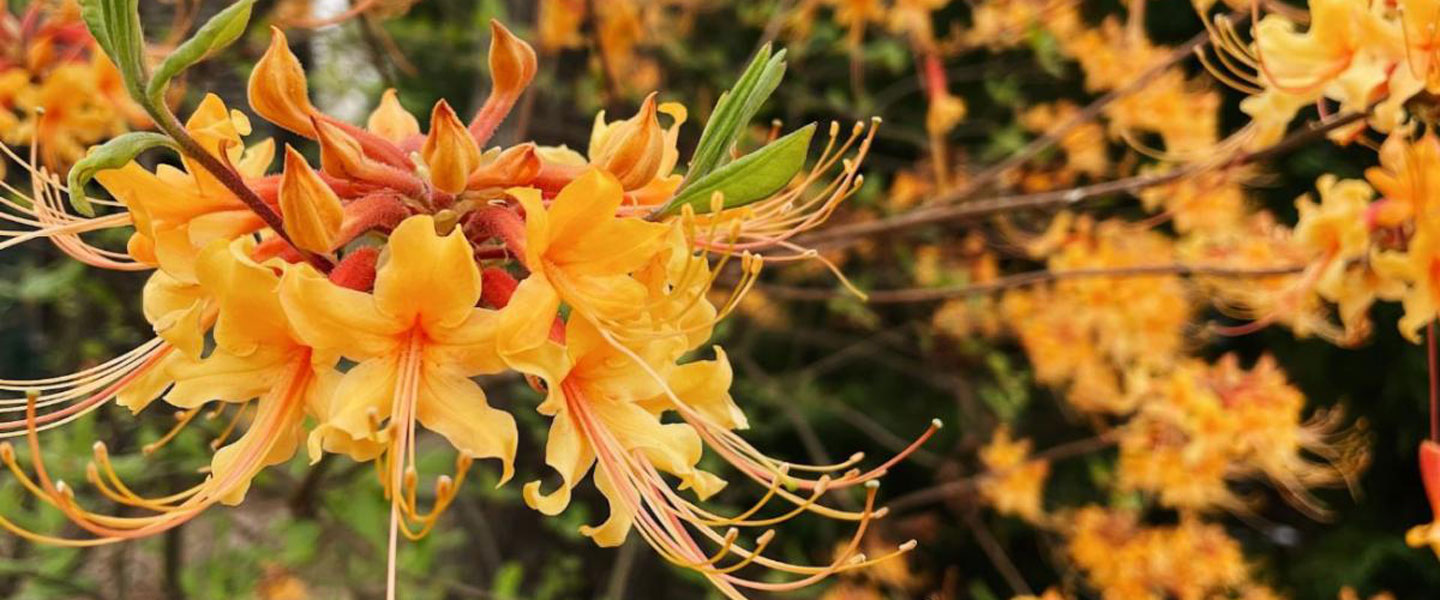The Water Log: Green Infrastructure at the Greenville Office
November 17th, 2022
By Erika Hollis
We understand that clean water work sometimes seems outside of our personal control and this month we want to take this opportunity to introduce a few things that you can do to help improve water quality. By incorporating practices known as “green infrastructure” in the places you live, work, and recreate, you can personally enhance water quality and the resilience of our communities.
In 2008, Upstate Forever moved into our current office location on Pettigru Street in a historic neighborhood in downtown Greenville. The building and its exterior were restored and renovated in a way to protect health, conserve energy, and reduce environmental impacts. Read on to learn more about the sustainable elements that were included into the outdoor spaces at our Greenville Upstate Forever location to reduce stormwater and how you might be able to do the same at your home or office.
Happy Holidays,

Erika Hollis
Clean Water Director
Upstate Forever
What is green infrastructure?
Runoff from stormwater continues to be a major cause of water pollution in urban areas. It carries trash, bacteria, heavy metals, and other pollutants over the land and through storm sewers into local waterways every time it rains. Add to that the fact that heavy rainstorms, which are becoming more frequent in the Upstate, can cause flooding that damages property and infrastructure.
Historically, communities have used what is referred to as ‘gray infrastructure’ which includes systems of gutters, pipes, tunnels, and detention basins to move stormwater away from urban areas as fast as possible and direct it straight to the nearest waterbody. However, gray infrastructure in many areas is aging and its capacity to manage large volumes of stormwater is decreasing across the country. To meet this infrastructure challenge, many communities are installing green infrastructure systems to increase stormwater management capacity. In doing so, communities are seeing the many environmental and economic benefits of using green infrastructure to manage stormwater.
Green infrastructure is an approach to water management that protects, restores, or mimics the natural water cycle. Green infrastructure is effective, economical, and enhances community safety and quality of life. The most significant components of this approach are stormwater management, climate adaptation, reduction of heat stress, increasing biodiversity, sustainable energy production, and clean water. Green infrastructure elements can be woven into a community at several scales. Examples at the urban level can include rain barrels, trees along major city streets, and greening alleyways and parks. On a neighborhood level, green infrastructure can include areas of open green spaces and establishing rain gardens. At a watershed level, it could be protecting large, undeveloped areas, promoting the preservation of riparian buffers, protecting wetlands, and so much more.
Green Infrastructure Outside of the Greenville UF Office
Green Roof:
Green roofs, also known as vegetated roofs, absorb rainfall that would otherwise be wasted as stormwater runoff and help compensate for the vegetated footprint eliminated during construction. They also provide temperature reduction, sound insulation, wildlife habitat, energy cost savings, extended roof life, air quality improvement, and aesthetic benefits. When it rains, water filters through the soil medium and is absorbed by the plants. Eventually it returns to the atmosphere through transpiration. Stormwater runoff is therefore reduced, and the remaining runoff is better quality due to filtration by the plants.
Our roof, manufactured by Green Grid and installed by Earth Design, employs a modular system for ease of installation and maintenance – you can replace one square at a time. The plants on our green roof, primarily crested iris (Iris cristata), green and gold (Chrysogonum virginianum), and spiderwort (Tradescantia sp.), can withstand heat, cold, and high winds and require little maintenance.
For more information on green roofs, visit this UF resource.
Pervious Pavement:
In the United States, impervious surfaces cover roughly 43,000 square miles, with parking lots being a major contributor. Parking lots pose a major threat to water quality and aquatic life. As rainwater washes off parking lots, it becomes polluted with oils, greases, chemicals, heavy metals, soil, and trash. Current development patterns in the Upstate have transformed formally natural permeable landscapes into enormous amounts of impervious pavement in the form of over-sized roads, highways, and parking lots. When rain hits these impervious areas, less is absorbed, resulting in more polluted stormwater washing off the land and at high speeds.
One solution to this problem is pervious pavement. Pervious pavement is a unique and effective way to address important environmental issues and to support sustainable growth. By capturing stormwater and allowing it to seep into the ground, porous concrete, asphalt, and pavers are instrumental in recharging ground water, reducing stormwater runoff, and meeting U.S. Environmental Protection Agency (EPA) regulations. This pavement technology promotes more efficient land use by eliminating the need for large stormwater retention ponds and other stormwater management devices. In doing so, pervious pavement can lower overall project costs.

Rain gardens:Rain gardens are landscaped areas designed to capture, store, and treat rainwater. This green infrastructure technique, most commonly found in residential areas and sometimes commercial and municipal sites, is designed to reduce runoff quantity, improve runoff quality, and recharge groundwater supply. Like green roofs, the plants and soils in rain gardens filter out pollutants from the water before returning it to the ground, where it restores groundwater supplies. In addition to providing water quality and quantity benefits, rain gardens often result in cost savings from reduced infrastructure. Because rain gardens return water to the landscape, traditional stormwater structures are not needed to carry water away from the site. The use of rain gardens may also reduce irrigation costs. Unlike grass or non-native plants, the native plants used in rain gardens require little to no watering after the plants are established. At the UF office, our rain garden is located by our back porch. For more information about rain gardens, and tools for crafting your own, use this resource. Native plants:As mentioned in previous Water Logs, the benefits of native plants cannot be understated. Native species are the trees, plants, and shrubs that naturally occur in a region and are adapted to local climate and soil conditions. Because they are acclimated to their local environment, they require far less water than non-native alternatives and play a crucial role in the health of local ecosystems. On top of being beautiful, here are some of the many benefits native plants provide compared to non-native or invasive plant species:
To learn more about native plants and their role in maintaining the natural character of the Upstate, visit the South Carolina Native Plant Society’s Website. At the UF Office, we enjoy a diverse set of native plant species that constitute our landscaping. Just a couple of our favorites are the crested iris (Iris cristata) and flame azalea (Rhododendron calendulaceum).
Helpful Holiday Reminder!Beware of F.O.G. (Fats, oils, and grease) pollution! Coming into the holiday season, F.O.G. pollution is more common, but easy to avoid. Examples of F.O.G.'s include cooking oil, butter/margarine/shortening, salad dressing, gravy, bacon/sausage grease, mayonaise, peanut butter, and dairy products. Why are F.O.G. so harmful? Fats, oils, and grease can solidify and accumulate around the insides of underground sewer pipes. This can lead to significant blockages, backups, pipe bursts, and sewer overflows. When sewer malfunction occur, raw sewage directly enter the environment and ultimately makes its way into streams, rivers, lakes, and oceans. Raw sewage carries excess nutrients, bacteria, and other disease-causing pathogens that negatively impact fist, wildlife, and human health. In addition to sanitary sewer systems, F.O.G. can solidify and accumulate in septic tanks and lines causing blockages, backups, and overflows. Similarly, these failing septic systems release raw sewage that can be picked up by stormwater water and discharged into nearby waterbodies. Malfunctioning septic systems are a homeowners responsibility, and the cost burden falls on them to make these costly repairs. What you can do to prevent F.O.G. pollution?
Until next time Thank you for signing up to receive The Water Log, Upstate Forever’s email newsletter dedicated to Clean Water news, issues, and information. We appreciate your interest and dedication to safeguarding the Upstate’s water resources. If you have any questions about this topic, or would like to learn about another Clean Water issue in a future edition, please contact me at ehollis@upstateforever.org. |




